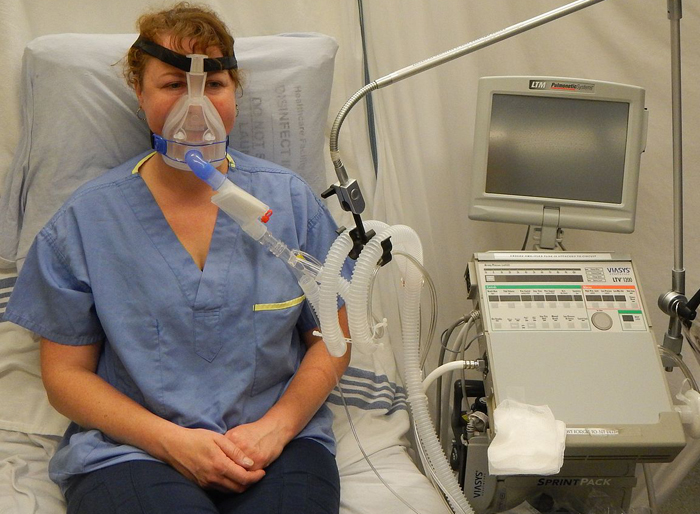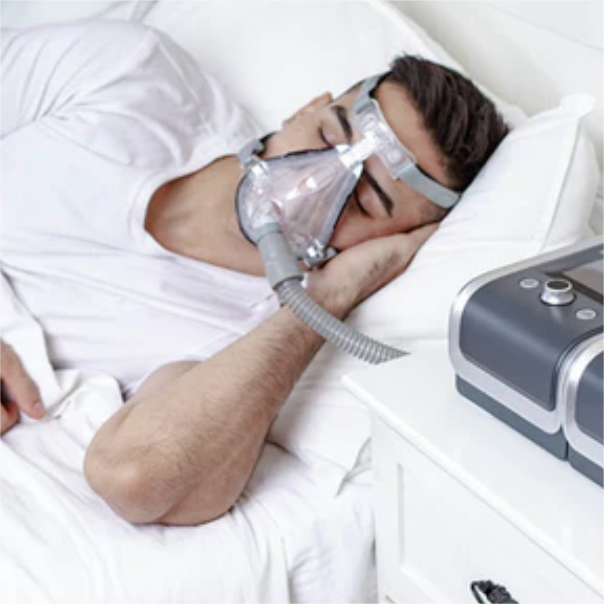BiPAP Rental: A Cost-efficient Different to Purchasing
BiPAP Rental: A Cost-efficient Different to Purchasing
Blog Article
Bipap vs. CPAP: Which Is the Best for Your Rest Disorder?
When navigating the complexities of rest problems, the selection in between BiPAP and CPAP therapy is an essential factor to consider. Each method uses special benefits tailored to specific problems, yet the choice depends upon individual person demands and convenience levels. While CPAP provides a steady air movement ideal for obstructive sleep apnea, BiPAP's dual stress setups may enhance convenience for those with more intricate respiratory issues. Recognizing these differences can considerably impact therapy effectiveness, leaving one to ponder which option absolutely lines up with their health and wellness requirements and lifestyle.
Understanding Rest Disorders
Rest conditions encompass a variety of conditions that interrupt normal sleep patterns, influencing both the high quality and period of rest. These conditions can show up in various types, including sleep problems, sleep apnea, narcolepsy, troubled leg syndrome, and parasomnias. Each condition offers distinct difficulties, often causing substantial daytime fatigue, cognitive disability, and psychological disturbances.
Sleeping disorders is identified by difficulty falling or remaining asleep, while rest apnea entails repeated disruptions in breathing during rest, usually resulting in fragmented rest. Narcolepsy, on the various other hand, is noted by too much daytime sleepiness and sudden sleep assaults. Uneasy leg disorder creates uncomfortable sensations in the legs, triggering an unmanageable impulse to relocate them, which can additionally hinder the ability to go to sleep.
The impact of sleep conditions prolongs beyond private health and wellness, influencing general efficiency, partnerships, and lifestyle. Understanding the details nature of each condition is critical for effective medical diagnosis and therapy. As sleep health ends up being progressively acknowledged as an important component of overall well-being, addressing these disorders is important for enhancing both rest top quality and day-to-day performance.
Exactly How CPAP Works
Continuous Favorable Respiratory Tract Pressure (CPAP) therapy is frequently used as a key treatment for obstructive sleep apnea (OSA) The mechanism of CPAP entails making use of a maker that provides a steady stream of air via a mask put on during sleep. This air movement preserves positive stress in the air passage, stopping the collapse or obstruction of the throat that can occur throughout sleep.
When a patient takes a breath in, the CPAP maker provides a continual flow of air, ensuring that the respiratory tract stays open - BiPAP Rental. This not only eases the signs of OSA, such as snoring and disrupted rest patterns, but additionally decreases the associated wellness risks, consisting of cardiovascular difficulties and daytime tiredness
The pressure settings on a CPAP equipment can be personalized to satisfy specific client requirements, typically identified with a rest study. Clients generally go through titration researches to locate the ideal stress level for their special problem. Regular follow-up and modifications might be required to ensure efficiency and convenience. Overall, CPAP therapy has actually been revealed to significantly enhance the top quality of rest and overall health and wellness for people dealing with obstructive sleep apnea.
Just How BiPAP Functions
BiPAP, or Bilevel Favorable Airway Pressure, is a specialized form of non-invasive ventilation that is particularly advantageous for individuals with problems such as complicated sleep apnea or breathing conditions. Unlike CPAP, which delivers a constant stream of air at a single pressure, BiPAP provides two distinctive stress settings: a greater inspiratory pressure for inhalation and a reduced expiratory pressure for exhalation. This dual-pressure approach permits less complicated breathing, reducing the effort called for throughout exhalation.
The tool runs with a mask fitted over the nose or mouth, linked to a device that generates atmospheric pressure. When the patient breathes in, the equipment provides the higher pressure to aid with air flow, making sure that the air passage remains open. Upon exhalation, the equipment instantly minimizes the pressure, making it more comfy for the individual to breathe out.
:max_bytes(150000):strip_icc()/GettyImages-635878206-25ee9a42856f41cfab94873074580679.jpg)
Secret Distinctions In Between BiPAP and CPAP

In contrast, BiPAP (Bilevel Positive Respiratory tract Pressure) uses 2 different pressure setups: one for breathing and a lower one for exhalation. This double stress system allows for more comfy breathing, specifically for clients that struggle with exhaling against a continual stress. BiPAP is typically advised for patients with complex sleep apnea, persistent obstructive lung disease (COPD), or those who need added assistance throughout rest.
Furthermore, the intricacy of BiPAP gadgets typically results in a higher expense and calls for extra careful titration than CPAP. BiPAP Rental. Comprehending these crucial distinctions can assist in recognizing which device may be much more appropriate for particular rest problems, establishing the foundation for enlightened therapy choices
Picking the Right Treatment
Exactly how can one establish one of the most ideal treatment for taking care of rest conditions? The decision between BiPAP and CPAP therapy primarily rests on the specific characteristics of the rest have a peek at this website problem, the person's total health and wellness, and their convenience with the gadget. CPAP, which delivers a continuous stream of air, is commonly suggested for obstructive rest apnea (OSA) It preserves an open airway during rest, properly protecting against hypopneas and apneas.
On the other hand, BiPAP provides 2 levels of stress: one for inhalation and a lower one for exhalation. This double pressure system is beneficial for people with complicated rest apnea or those that experience difficulty breathing out against a constant pressure. In addition, BiPAP is typically advised for people with respiratory problems, such as persistent obstructive pulmonary condition (COPD), where varying stress setups can enhance convenience and compliance.
Inevitably, a comprehensive evaluation by a sleep specialist, including a sleep research, can assist determine which therapy straightens best with the person's needs. Aspects such as comfort, simplicity of usage, and specific medical problems should likewise be thought about to enhance therapy outcomes.
Verdict
In recap, both BiPAP and CPAP offer distinct purposes in the administration of sleep conditions. CPAP is reliable for obstructive rest apnea via consistent airflow, while BiPAP provides double pressure settings that improve comfort for those with complicated rest apnea or breathing concerns. The selection in between these treatments need to be led by individual needs and problems, demanding a detailed evaluation by a rest professional to make certain optimum therapy end results and boosted high quality of sleep.

Overall, CPAP treatment has actually been revealed to considerably improve the high quality of try this site sleep and general wellness for individuals experiencing from obstructive rest apnea.
BiPAP is commonly suggested for patients with intricate sleep apnea, chronic obstructive lung illness (COPD), or those who need additional assistance throughout sleep.
CPAP is reliable for obstructive sleep apnea via regular air flow, while BiPAP uses double pressure settings that boost convenience for those with intricate rest apnea or respiratory system issues.
Report this page